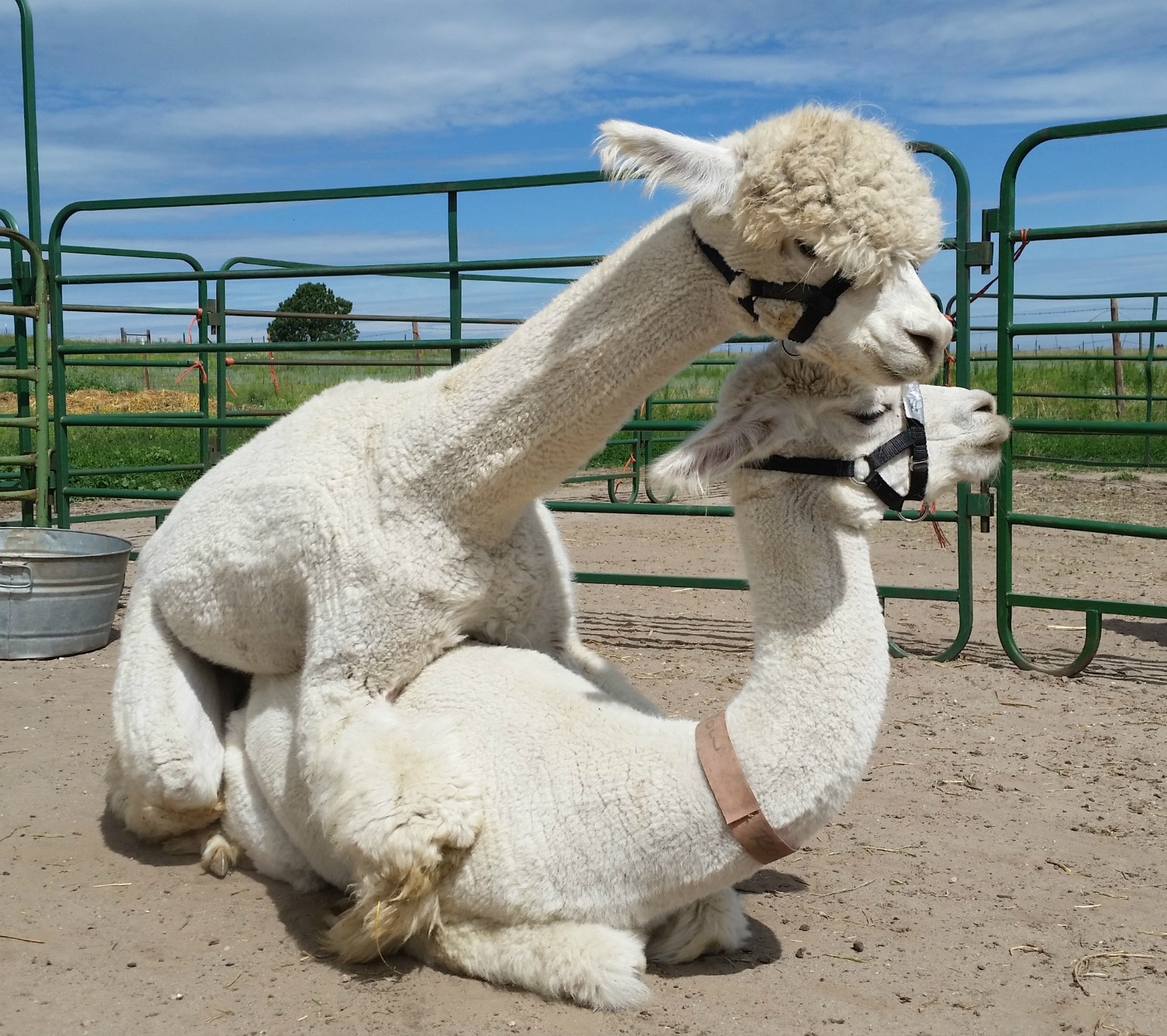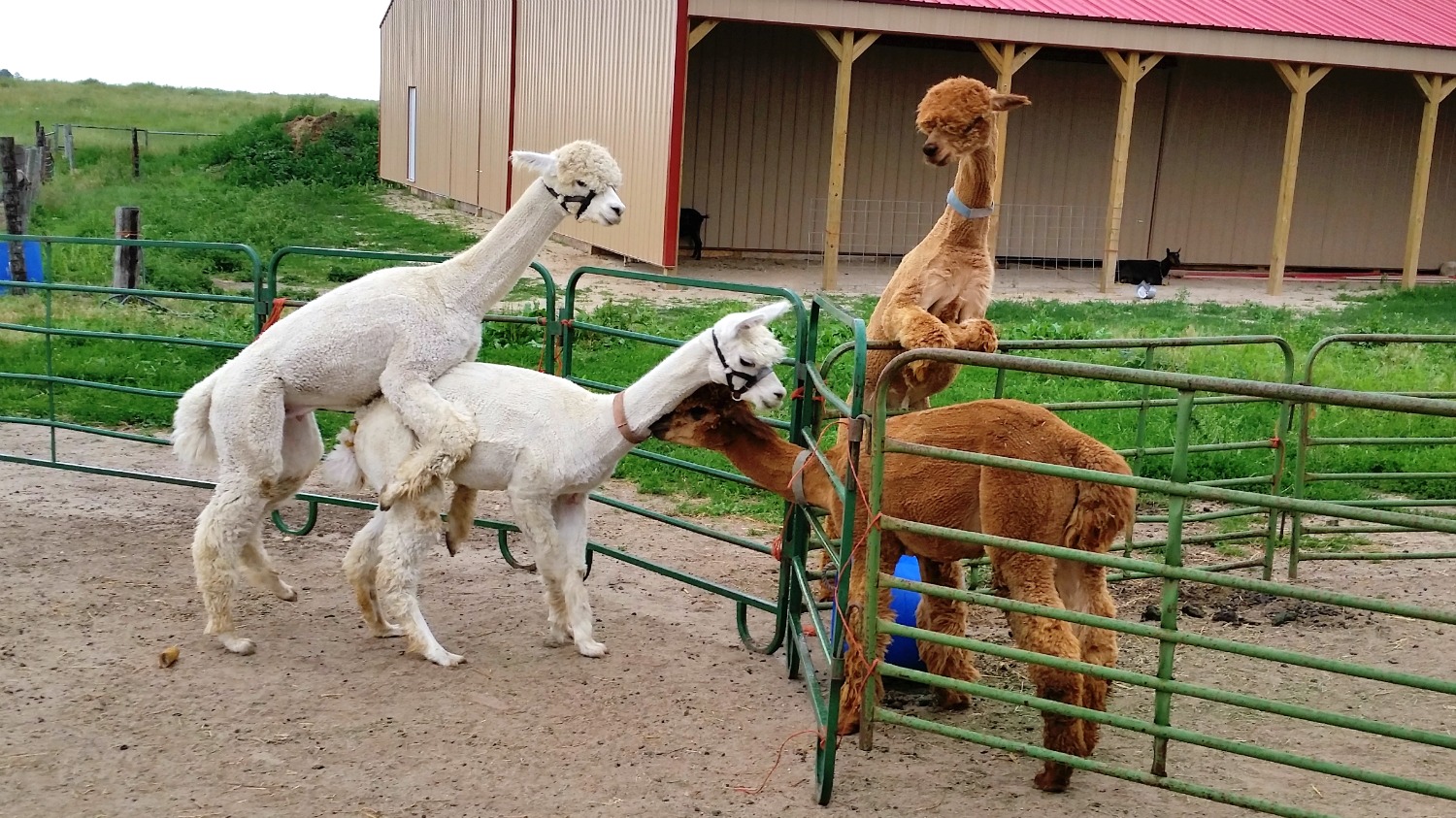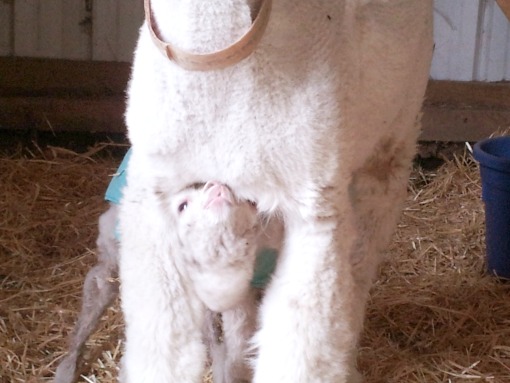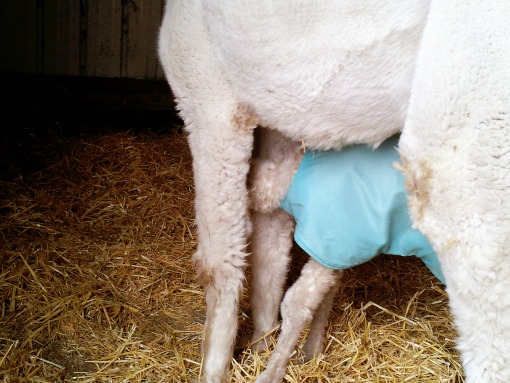Alpacas – The Birds and the Bees

Males are pretty much ready to go at the drop of a hat…if they are anywhere near a female & they are not separated, by say a fence (there’s that fence thing again), they will chase the female and mount her. If she is interested she will “cush” and allow the male to do his thing. If she is not interested, she will “spit him off” and then lead him on a merry chase.

Alpacas are what are known as induced ovulators, which means that the noise of the male “orgling” and then mounting the female (to put it delicately) is what causes her to ovulate. I personally find this fascinating, and yes, I know that is a bit odd.
Several days after the alpacas got together, we will expose the female to the male again and if she spits him off, chances are good that she is pregnant.
We will repeat the process again in about a week and if she still spits him off, then we feel fairly confident that she is in fact pregnant. It is possible to have the vet come out and perform an ultrasound about 60 days later, and we will generally do this with a first time mom, but with our older girls, we just leave things alone and let nature take it’s course.
Over time, we have had very few problems with birthing and on the couple of occasions that we did have problems, it was something simple like a stuck shoulder and only a little tugging on the cria was necessary to get things moving again.
The alpaca’s nose will appear first, still encased in the placenta, followed by a front foot on either side of the head, which our vet calls the “superman” position. Then the neck will pop out and many times the cria will just be hanging out of mom like that for a period of time.
The first time I witnessed one of our girls giving birth, this hanging thing really made me anxious…the cria was coughing and wheezing and I was sure she was going to die, but, as I have learned, it is all part of the process. Sometimes mom will even lie down with the cria hanging out, and I have had to pick their heads up to get them out of the dirt more than once.
But eventually mom will finish pushing and out pops the little cria, still covered in the placenta. Moms do not lick their crias the way cows do, so if I am present, I will clear off their noses and if it is a cool day, will towel the little one off a bit.
Alpacas give birth during daylight hours which makes the life of the alpaca breeder much easier than that of the cattleman, who can be up at all hours during calving season.
Alpacas are indigenous to the high Andes of South America, and while I have not been able to find confirmation of this, my thought is the daylight birthing is so that the crias can get dry and on their feet before dark when temperatures drop and predators become active.
I hope you have enjoyed this latest post about alpacas! As always, please leave me a comment and let me know if you would like to hear more about our alpacas.
Until next time, Happy Trails!
Diana
Home
About Us
Blog
Shop Our Yarns
Shop Knitting Patterns
Contact
Connect with Us
Knitting Sites I'm Loving
Our Unraveled
Watch Barbara Knit
Very Pink Knits
Knit Picks
New Stitch a Day
Lace Knitting Stitches
Picot Bind Off
Crescent Shawl Shapes
Russian Join
Joining in the Round



0 Comments